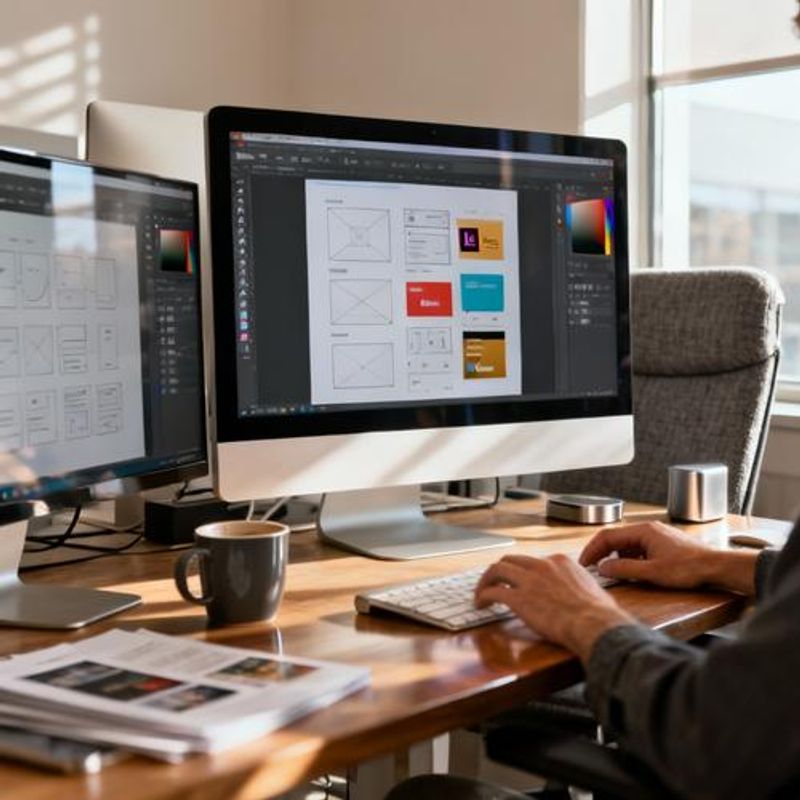Essential Design Tools & Resources Every Beginner Student Needs to Know

Starting your design journey feels overwhelming when faced with countless tools and resources. This comprehensive guide cuts through the noise to reveal the essential tools & resources that successful design students actually use daily. You'll discover free and affordable options that can transform your creative workflow, plus insider tips to avoid common beginner mistakes that waste time and money.

Why the Right Tools Matter for Design Students
Design students face unique challenges: tight budgets, steep learning curves, and the pressure to build portfolios quickly. The wrong tool choices lead to frustration, wasted time, and subpar results. Research shows that students who start with appropriate tools & resources complete projects 40% faster and report higher satisfaction with their creative output. This guide addresses the most common pain points: budget constraints, software complexity, and the fear of choosing the 'wrong' tools that might limit future growth.
Quick Start Toolkit: What You Need Now
Here's your essential starter kit to begin creating professional-quality work immediately:
- One versatile design software (Figma for digital, GIMP for photo editing)
- Color palette generator (Coolors.co or Adobe Color)
- Font pairing resource (Google Fonts or Font Joy)
- Free stock photo library (Unsplash or Pexels)
- Design inspiration platform (Dribbble or Behance)

Essential Software Tools for Different Design Disciplines
Choose your primary tools based on your design focus. For graphic design beginners, start with Canva for quick projects and gradually transition to Adobe Illustrator or the free alternative Inkscape for vector work. UI/UX students should prioritize Figma, which offers robust free plans and industry-standard collaboration features. Photography enthusiasts can begin with Adobe Lightroom's mobile app before investing in the desktop version. Motion graphics students benefit from DaVinci Resolve's free video editing capabilities before upgrading to After Effects. The key is mastering one tool thoroughly before expanding your toolkit.
Budget-Friendly Learning Resources That Actually Work
YouTube University remains unbeatable for free tutorials. Channels like The Futur, AJ&Smart, and DesignCourse offer professional-level instruction. For structured learning, Coursera and edX provide university-quality design courses, often free to audit. LinkedIn Learning offers student discounts and comprehensive skill paths. Don't overlook your school's Adobe Creative Cloud educational pricing – it's often 60% cheaper than regular subscriptions. Create a learning schedule mixing free YouTube tutorials with one paid platform for structured progression.
Free Resource Libraries Every Student Should Bookmark
Build your resource arsenal systematically. For icons, start with Feather Icons and Heroicons for clean, professional options. Typography enthusiasts should explore Google Fonts' extensive library and pair it with FontPair for inspiration. Stock photography needs are covered by Unsplash, Pexels, and Pixabay. For design elements, Freepik offers generous free tiers with attribution. Create organized bookmark folders: Tools, Inspiration, Learning, Resources, and Templates. This organization system saves hours of searching and creates a personalized design toolkit tailored to your projects.

Common Mistakes That Waste Time and Money
Avoid the 'shiny object syndrome' – collecting every new tool without mastering basics. Students often purchase expensive software subscriptions before understanding their actual needs. Another costly mistake is ignoring file organization systems early on, leading to lost work and missed deadlines. Don't fall into the perfectionism trap of endless tool research instead of creating. Set a tool budget and stick to it. Most importantly, resist the urge to switch tools mid-project unless absolutely necessary. Consistency builds expertise faster than constant tool-hopping.
Your Next Steps to Design Success
Start with the Quick Start Toolkit above – pick one tool from each category and commit to using them for your next three projects. This focused approach builds confidence and expertise faster than tool-hopping. Bookmark this guide and revisit it monthly to add new resources as your skills grow. Remember, professional designers succeed not because they use the most tools, but because they master the right tools for their workflow. Your design journey starts with that first project, not perfect tool selection. Ready to transform your creative process? Download our free Design Student Toolkit checklist to track your progress and discover weekly tool recommendations tailored to your skill level.